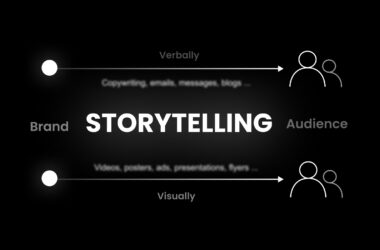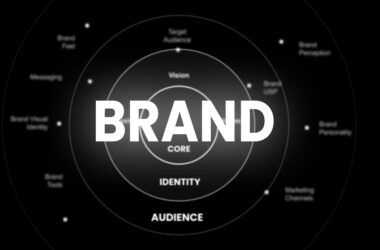What you’ll explore:
We have uncountable brands and businesses out there, and they already have first-mover advantages in their fields to build compassionate relationships & reputations, but now the question is how we can create differentiation in upcoming businesses & brands which audiences love & investors trust!
Here are some strategies to achieve that:
1. Identify a Unique Value Proposition (UVP)
Start by identifying what makes your business or brand unique and valuable. Conduct market research to understand customer needs, pain points, and unmet demands. Develop a clear UVP that sets you apart from competitors and addresses a specific audience’s requirements. Your UVP should offer something distinct, relevant, and compelling that appeals to both customers and investors.
Process of creating compelling UVP that investors love to invest in:
- Define Your Target Audience: Clearly define the specific audience or market segment you want to target. Understand their demographics, psychographics, behaviors, and needs. Identify their pain points, challenges, desires, and aspirations.
- Research the Market and Competitors: Conduct thorough market research to gain insights into the industry landscape and competitors. Identify what products, services, or solutions are currently available and how competitors are positioning themselves. Analyze their strengths, weaknesses, and market gaps.
- Identify Customer Needs and Wants: Based on your target audience analysis, identify the key needs, wants, or problems that your customers are facing. Look for areas where existing solutions may be lacking or not fully addressing customer requirements. Focus on identifying unmet needs or opportunities for improvement.
- Evaluate Your Unique Qualities: Assess your own business or brand objectively. Identify the unique qualities, strengths, capabilities, or resources that you possess. These could include technological advancements, expertise, proprietary processes, specific market knowledge, or innovative features.
- Determine Key Differentiators: Analyze the insights gathered from steps 2 to 4 and identify the aspects that differentiate your business or brand from competitors. Look for unique selling points, benefits, or advantages that resonate with your target audience and fulfill their needs better than existing alternatives.
- Test and Validate: Once you have identified potential differentiators, validate them with your target audience. Conduct surveys, interviews, or focus groups to gather feedback and insights. Understand if your identified unique qualities and benefits truly resonate with your audience and if they find them compelling.
- Craft a Clear and Compelling UVP: Based on the insights gathered, distill your unique qualities and differentiators into a clear, concise, and customer-focused UVP. Articulate how your business or brand uniquely addresses your target audience’s needs and offers distinct benefits or advantages. Ensure your UVP communicates a compelling reason why customers should choose your offering over competitors.
- Align with Brand Values and Messaging: Ensure your UVP aligns with your brand values, mission, and overall messaging. It should reflect your brand’s personality, voice, and positioning in the market. Consistency in messaging and branding helps build brand recognition and trust.
- Test and Refine: Once you have developed your UVP, test it further with your target audience. Refine and iterate based on their feedback. Continuously evaluate and adapt your UVP as market dynamics and customer needs evolve.
Remember, an effective UVP should be customer-centric, clearly communicate the unique benefits or advantages, and resonate emotionally with your target audience. It should differentiate your business or brand in a meaningful and compelling way, providing a strong reason for customers to choose you over competitors.
2. Authentic Brand Storytelling
Craft a compelling brand story that connects emotionally with your target audience and investors. Communicate your brand’s mission, values, and vision in a way that is relatable, authentic, and inspiring. Share the story of why your business exists and the impact you aim to make. Authentic storytelling helps build an emotional connection with stakeholders and differentiates your brand from others.
Process of building brand stories that resonate with a wide audience loves & foster brand loyalty:
- Define Your Brand Identity: Start by clearly defining your brand’s identity, including its mission, vision, values, and personality. Understand what your brand stands for and what makes it unique. This foundation will guide your storytelling efforts and help you create a consistent and authentic brand narrative.
- Know Your Audience: Gain a deep understanding of your target audience—their demographics, psychographics, interests, aspirations, and pain points. Identify their needs, desires, and values. This knowledge will enable you to create brand stories that resonate with their motivations and emotions.
- Identify the Core Message: Determine the key message or messages you want to convey through your brand story. It should encapsulate the essence of your brand and resonate with your target audience. This message should communicate the value you provide and the positive impact you make in people’s lives.
- Craft a Compelling Narrative: Develop a compelling narrative that engages and captivates your audience. Your brand story should have a clear beginning, middle, and end. Consider using storytelling elements like characters, conflicts, resolutions, and emotional arcs to create an engaging and memorable narrative.
- Make it Authentic and Relatable: Authenticity is key to connecting with your audience. Craft a brand story that reflects your brand’s values, history, or the experiences of your customers. Showcase real people, relatable situations, and genuine emotions to make your brand story resonate on a personal level.
- Use Visuals and Imagery: Enhance your brand story with compelling visuals and imagery. Visual elements such as photographs, illustrations, videos, and infographics can enhance the emotional impact of your story and make it more memorable. Ensure that your visuals align with your brand’s identity and create a consistent visual language.
- Showcasing Brand Values: Embed your brand values within your story. Highlight how your brand makes a positive difference in the world or how it aligns with the values of your audience. This helps create an emotional connection and resonates with individuals who share similar beliefs.
- Deliver Consistently Across Channels: Ensure that your brand story is consistently communicated across all channels and touchpoints. From your website and social media platforms to advertising campaigns and customer interactions, deliver a cohesive narrative that reinforces your brand’s story and values.
- Encourage User-Generated Content and Engagement: Foster a sense of community and encourage your audience to share their own stories and experiences related to your brand. User-generated content and engagement create a deeper level of connection and loyalty. Acknowledge and amplify these stories to build a strong brand community.
- Evolve and Adapt: As your brand evolves and market dynamics change, be prepared to adapt and refine your brand story. Stay attuned to the feedback and preferences of your audience. Continuously evaluate and adjust your storytelling to ensure it remains relevant and resonant.
Remember, building brand loyalty takes time and consistency. By crafting authentic, emotionally engaging brand stories that align with your audience’s values and aspirations, you can create a loyal following that loves and advocates for your brand.
3. Customer-Centric Design
Focus on designing products, services, and experiences that prioritize the needs and desires of your target audience. Conduct user research and involve customers in the design process to ensure your offerings meet their expectations and solve their problems effectively. User-centred design helps create differentiation by providing a superior and tailored experience that customers love.
Process of tailoring products & services that customers & clients enjoy:
- Research and Gather User Insights: Conduct user research to gain a deep understanding of your target audience. Use methods like interviews, surveys, observations, and usability testing to gather insights into their needs, pain points, motivations, and behaviors. Understand how they currently interact with similar products or services and identify areas for improvement.
- Create User Personas: Develop user personas that represent different segments of your target audience. Personas are fictional representations of your ideal customers, based on research and data. They help you empathize with your users, understand their goals and challenges, and make design decisions that cater to their specific needs.
- Define User Journey and Touchpoints: Map out the user journey, from the initial interaction with your brand to the final interaction or purchase. Identify the touchpoints where users engage with your product or service. This includes interactions across digital platforms, physical spaces, customer support, and post-purchase experiences. Analyze each touchpoint to ensure they align with user expectations and provide a positive experience.
- Prioritize User Needs: Prioritize the needs and pain points identified during the research phase. Determine which aspects of the user experience are critical for addressing these needs and delivering value. Focus on designing solutions that effectively solve user problems and fulfil their goals.
- Ideation and Concept Development: Generate ideas and concepts that address the identified user needs. Brainstorm with a multidisciplinary team to explore various possibilities and potential solutions. Encourage diverse perspectives and collaboration to foster creativity and innovation.
- Prototype and Test: Create prototypes of your design concepts to gather feedback and validate your ideas. Use low-fidelity prototypes initially to quickly iterate and refine your designs based on user feedback. Gradually move towards higher-fidelity prototypes as you gain more confidence in your design solutions. Conduct usability testing and gather qualitative and quantitative data to ensure that your design effectively meets user needs.
- Iterative Design: Embrace an iterative design process, continuously refining and improving your design based on user feedback and testing results. Incorporate user insights and data into each iteration to ensure that your design evolves in response to user needs and preferences.
- Usability and Accessibility: Prioritize usability and accessibility in your design. Ensure that your product or service is intuitive, easy to navigate, and provides a seamless experience. Consider accessibility guidelines and best practices to ensure that your design is inclusive and can be accessed by users with different abilities.
- Continual User Feedback: Establish channels for ongoing user feedback and engagement. Encourage users to provide feedback, suggestions, and ideas for improvement. Regularly collect and analyze user data, conduct surveys, and monitor user behavior to identify areas for refinement and innovation.
- Collaboration and Cross-functional Teams: Foster collaboration among different teams within your organization, including design, engineering, marketing, and customer support. Involve stakeholders from different departments in the design process to ensure that the customer-centric approach is embedded throughout the organization.
By following this process, you can ensure that your design decisions are driven by a deep understanding of your users. Tailoring your design to meet their needs and preferences will result in products, services, and experiences that resonate with your customers and create long-lasting relationships.
4. Visual Identity and Branding
Invest in creating a visually appealing and cohesive brand identity that reflects your brand’s personality and resonates with your target audience. Develop a unique and memorable logo, and choose distinct colors, typography, and design elements that differentiate your brand visually. Consistency in branding across all touchpoints builds recognition, trust, and loyalty.
Learn more about this from our ultimate guide build brand identity
5. Innovation and Technology
Embrace innovation and leverage technology to create differentiation in your business or brand. Stay updated with industry trends and adopt emerging technologies that can enhance your products, services, or processes. Incorporate innovative features, functionality, or business models that set you apart from competitors and demonstrate your commitment to progress.
6. Exceptional Customer Experience
Prioritize delivering exceptional customer experiences at every interaction point. From initial contact to post-purchase support, focus on providing personalized, attentive, and seamless experiences that delight customers. A positive customer experience creates differentiation by fostering loyalty, positive word-of-mouth, and customer advocacy.
7. Social Responsibility and Sustainability
Demonstrate a commitment to social responsibility and sustainability. Incorporate ethical and sustainable practices into your business operations and communicate these initiatives transparently. Increasingly, customers and investors value brands that prioritize social and environmental responsibility, creating a differentiation factor that resonates with both audiences.
8. Build Trust with Investors
In addition to audience love, it’s essential to build trust with investors. Be transparent about your business strategy, financials, and growth plans. Develop a compelling investor pitch deck that highlights your unique value proposition, market opportunity, and growth potential. Showcase a strong understanding of your target market, competition, and your ability to execute on your vision. Establishing credibility and a track record of progress can attract investor trust.
Remember, building differentiation and trust takes time and consistent effort. Continuously listen to your audience, adapt to their evolving needs, and refine your branding and design strategies accordingly. By focusing on creating value, providing exceptional experiences, and communicating your unique strengths, you can differentiate your upcoming business or brand in a way that resonates with both audiences and investors.
Post Script: Not every pointer needs to have a process, but stay in touch with us, we will soon come up with something that will explain most of the unexplained or till then you can mention us on any platform if you want to share your knowledge or discuss the subject matter with us regarding the same!






